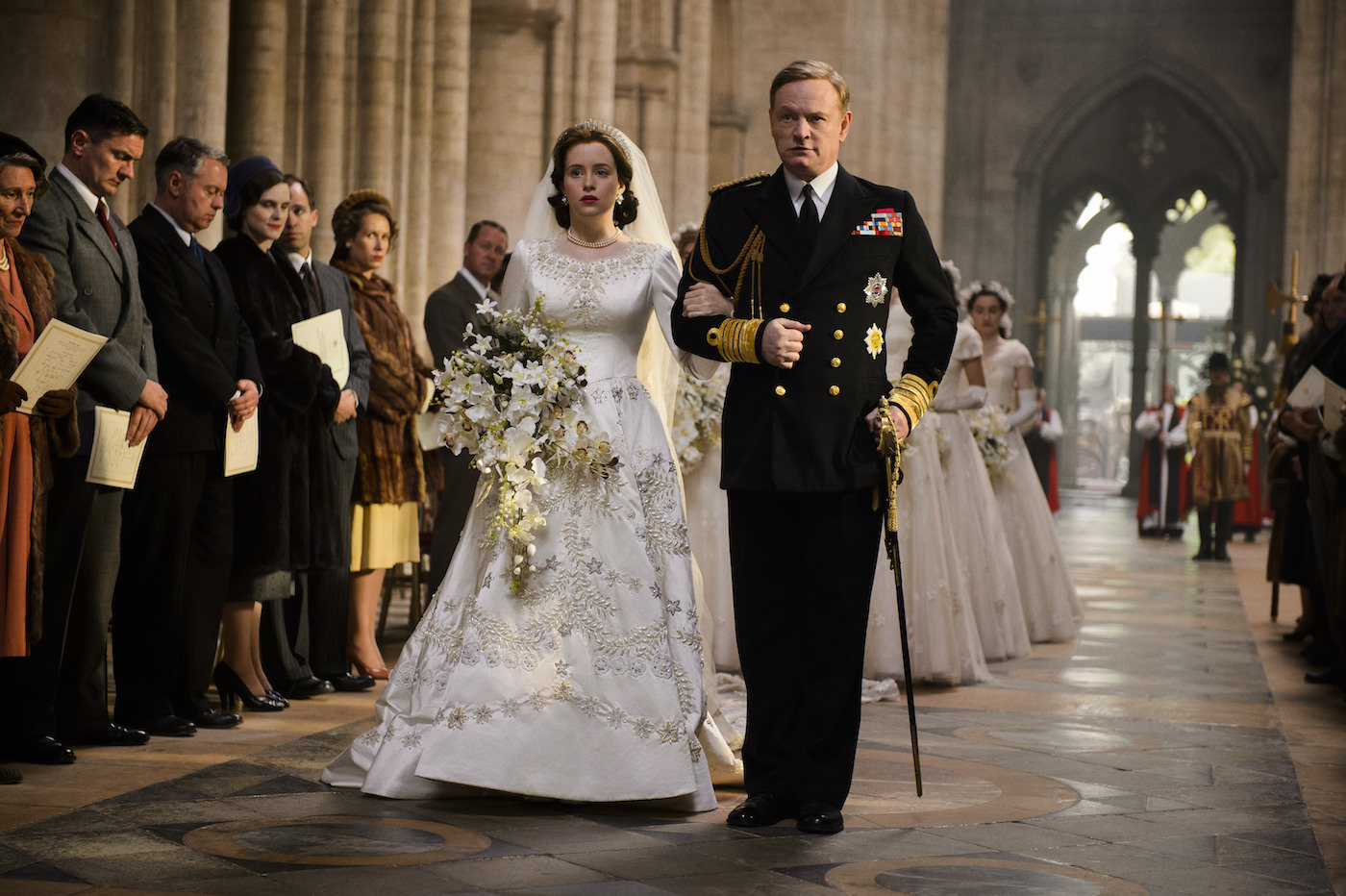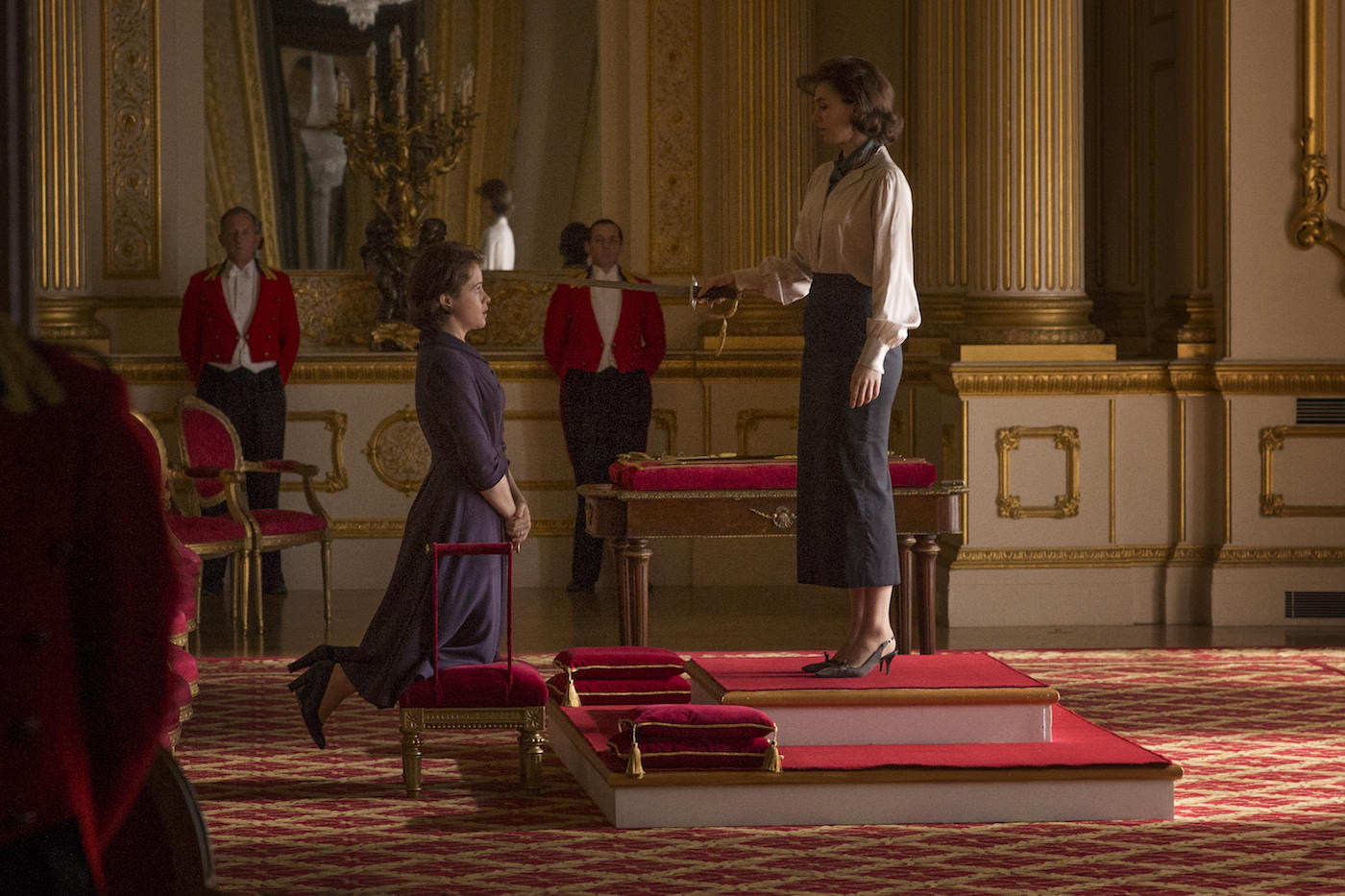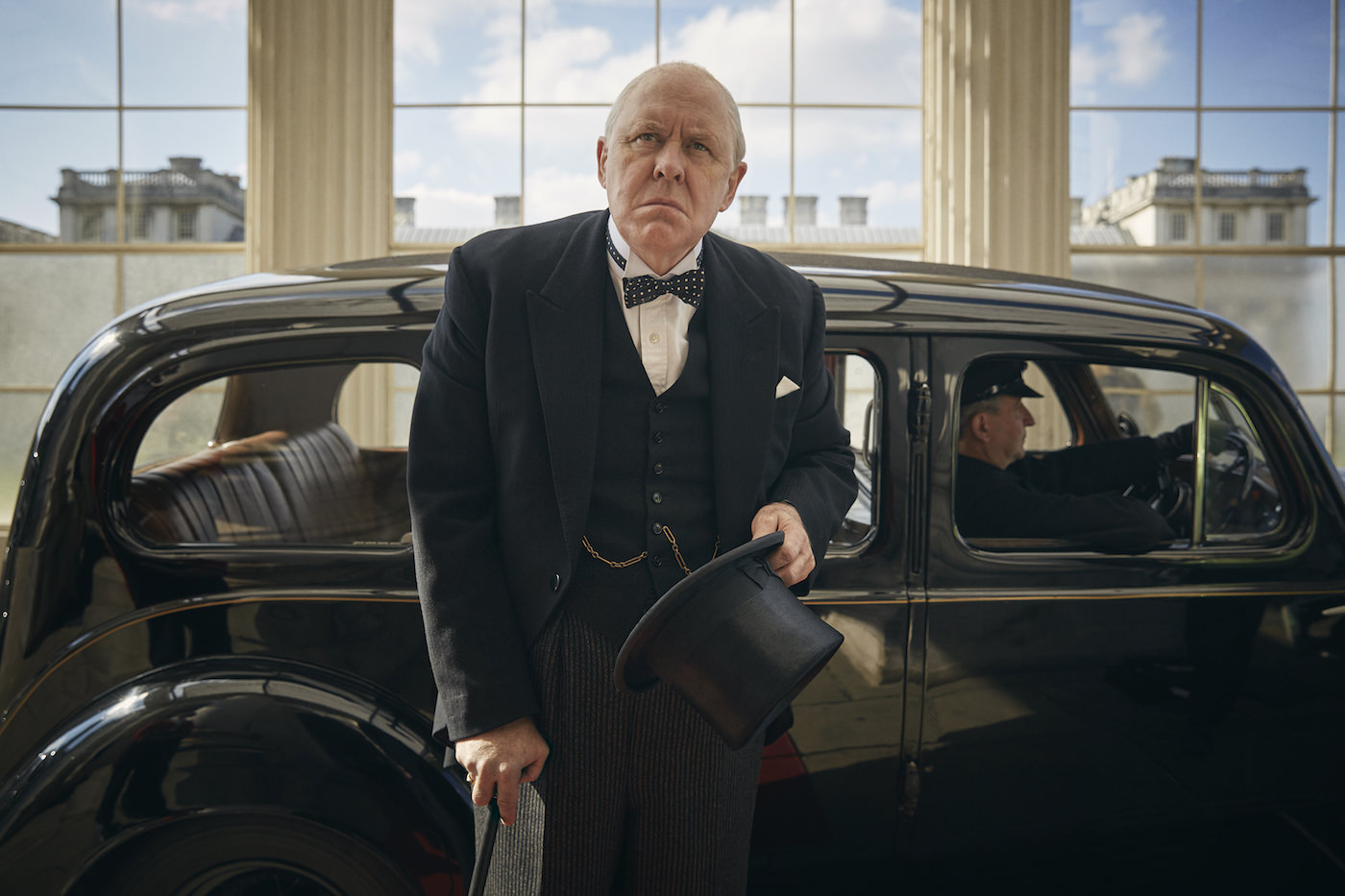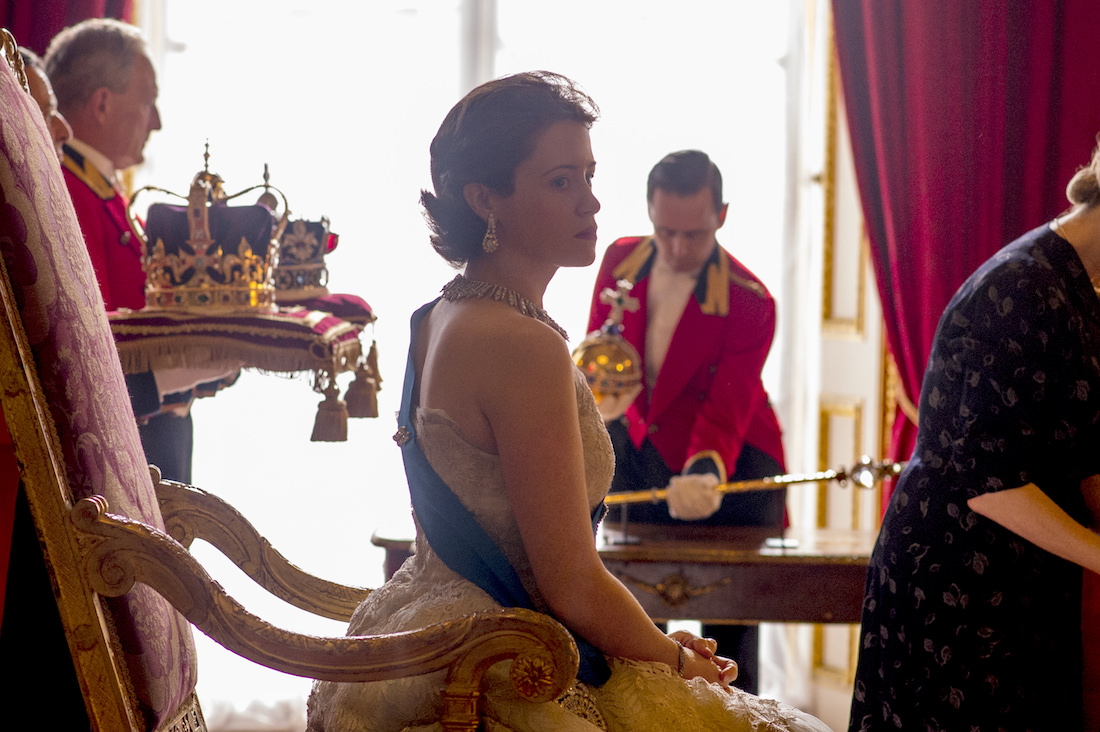Production Designer Martin Childs on Getting The Crown’s Interiors Royally Right
At an estimated cost of $100 million, the first season of The Crown, Netflix’s historical depiction of the early years of Queen Elizabeth II’s reign, is the streaming service’s priciest show to date. Yet the settings — Buckingham Palace, Winston Churchill’s Downing Street chambers, broader post-war London — are hardly a representation of purely lavish living. In this restrained and forgiving portrait of the royal family in the late 1940s and early 1950s, production designer Martin Childs (known for his work on Shakespeare in Love and Mr. Holmes) has delivered an unexpected, and realistically muted, backdrop to Elizabeth’s emergence as a young queen at a time when Great Britain had barely come out of wartime rationing. We chatted with Childs about achieving this visual balance and his private plans for recreating Buckingham Palace’s interiors.
The palace scenes are admirably realistic. Where, and how, did you do most of the interiors?
I visited Buckingham Palace and there was a line in one of the early drafts, where someone refers to the sheer mileage of the place — nobody says it, it’s just a direction. You can’t create mileage on a sound stage, but you can [mimic] it through a number of different locations. All of the intimacy I created at Elstree Studios. To play the part of Buckingham Palace, we went to Lancaster House, Wilton House, and Goldsmith’s Hall, which is the one where we did the king’s operation. The Queen’s audience room is played by Wrotham House.

Claire Foy as Elizabeth and Jared Harris as King George VI. Courtesy Netflix.
All of these things seemed to offer aspects of Buckingham Palace, so seeing all of it, you got an idea of the sheer mileage of it. My idea was to have a plan, which I never really shared with anyone, even the directors. But I came up with a plan, that if you start at Lancaster House, and then [move to] Wilton House, and then L Street Studios, you can get the sheer mileage of the palace.
To get to this vision, what historical archives did you use? Given its the royal family, there must be plenty from which to choose.
In 1947, we’d just come out of a war, so I was keen to show that Buckingham Palace had been on the receiving end of a bomb, certain buildings in Whitehall had been on the receiving end of bombs, and the country was on its knees financially. I wanted to get some of that bomb damage and austerity through to the set. The only way to do this, besides put an unbelievable level of richness into the frame, which is what the audience would expect in a miniseries about royalty, [was to put] at the same time all this decay. I wanted this juxtaposition of rich reds and golds and the gray of a damaged city. Princess Margaret called this period “phoenix time,” as everything was rising from the ashes. So we put things in shades of brown and gray with this metaphorical jewel in the middle of it all.

Claire Foy as Queen Elizabeth and Vanessa Kirby as Princess Margaret. Courtesy Netflix.
Given this juxtaposition, was there anything you couldn’t recreate?
There was never anything in the script that we couldn’t recreate. I made a little rule with myself and the directors early on, which was only ever broken very slightly, that at least two-thirds of the screen should be real. I just think a sophisticated, 21st century audience knows when its’ being hoodwinked by digital effects. If we were to do a helicopter shot over London, people would know it was digital. We wanted to create a world where the extraordinary emotional story of becoming queen could realistically take place.

John Lithgow as Winston Churchill. Courtesy Netflix.
How did you do Winston Churchill’s home? It’s such a drab contrast to the palace, of course.
Winston Churchill famously had a bedroom at the top of Downing Street. And I think you can tell from the way we portrayed it, interior design was not his first concern. We made it purely functional, and from there we were able to go to town with the austerity of it, with things like the bathwater coming under the door. Winston Churchill had completely decaying walls. Here I was able to show the damage the war had done to Downing Street, and if there was money left in the country’s bank balance, Winston Churchill wasn’t going to spend it on new wallpaper. Research tells us he did a lot of his work horizontally — he was either in the bath or on the bed. He had no inhibitions, the ones who had it would become accustomed to it were his secretaries, who had to get used to it.

Claire Foy. Courtesy Netflix.
We’re looking forward to the next installment. Can you tell us anything about season two, and Elizabeth’s progress as queen?
I think the one thing I can reveal is that it doesn’t stay put. There’s quite a bit of traveling about. So we have had to recreate, or I suppose our biggest challenge, was recreating the royal yacht Britannia. They call it a yacht, it’s a big ship, really. One thing the audience goes away from season one knowing is how the Buckingham Palace rooms were, with Philip’s being several rooms away from Elizabeth’s but still visible. That’s based on reality. But it’s impossible to find on location, so it’s one thing I was very keen to build at L Street. In a way the royal yacht reflects this, and is a miniature version of this arrangement, so I’m hoping the audience



